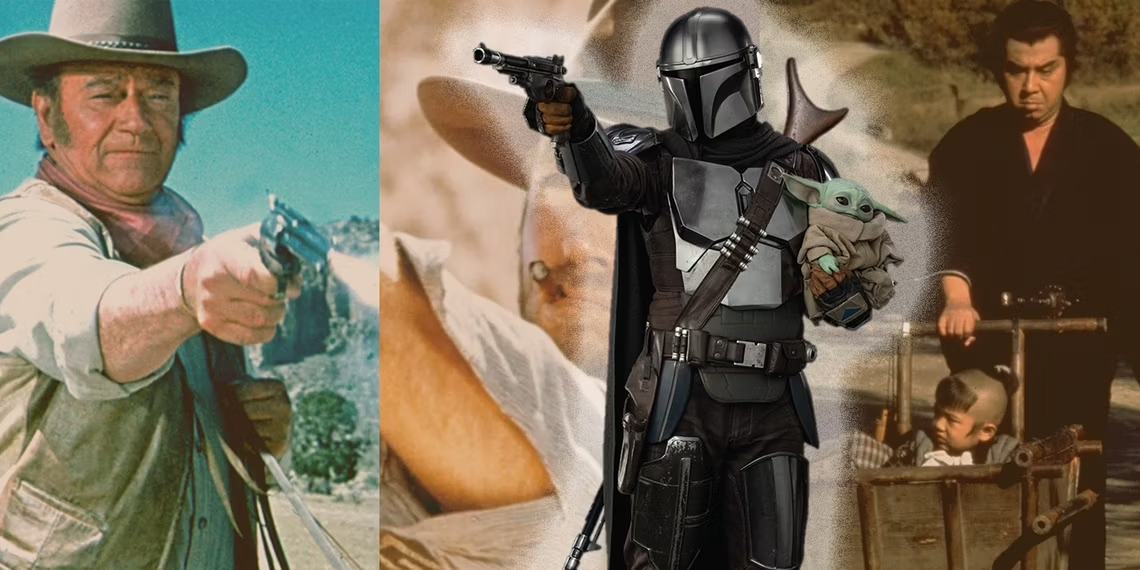
The Mandalorian series focuses on the lone bounty hunter Din Djarin traversing across the galaxy. He eventually encounters Baby Yoda (who is introduced as The Child) as one of his bounties. However, instead of turning the Child in and collecting the bounty, he tries to protect Baby Yoda from the Empire and faces many enemies along the way.
The show can be classified as a ‘space Western’ that has some influence from classic spaghetti Westerns as well as older samurai movies. The original Star Wars movies all have visual and thematic aspects that are borrowed from primarily the Western genre (Freeman & Smith, 2023). These genres play a huge role in developing the Star Wars franchise. For example, Star Wars has its own conceptualisation of ‘the frontier’: an area far from civilisation where lawlessness and criminality is very apparent. This is reflected in the Mos Eisley cantina in Star Wars: A New Hope that resembles a saloon in a Western movie (Freeman & Smith, 2023). Furthermore, homage to the Western genre is paid with the inclusion of the character of Boba Fett in the Star Wars movie: Empire Strikes Back. This character’s design and personality has a lot of similarity to Clint Eastwood’s ‘Man with No Name’ from the Spaghetti Western The Good, the Bad and the Ugly. Boba Fett is a character that features briefly in the Mandalorian where Din Djarin is also portrayed as a ‘Western hero’ (Freeman & Smith, 2023). Disney also enforces this image through promotional text on their website concerning The Mandalorian such as: ‘We follow the travails of a lone gunfighter in the outer reaches of the galaxy, far from the authority of the New Republic’. This text mentions the ‘lone gunfighter’ trope from Western as well as highlighting the Star Wars version of the Frontier (Freeman & Smith, 2023). The strategy behind making these connections to Westerns is called ‘genre-linking’ and it functions as a way to associate a newer media (The Mandalorian) with older media (The original Star Wars trilogy) from the same franchise. This way, the ‘feeling’ of the show is consistent with the movies and therefore better integrated in the franchise (Freeman & Smith, 2023).

Additionally, The Mandalorian borrows elements from Japanese samurai movies, especially in the episode: The Jedi where the planet he is on, as well as the architecture and fight sequences signify samurai movies (Freeman & Smith, 2023). Moreover, the ‘heroic protective father’ trope of Din Djarin is heavily drawn from the Japanese samurai movie Wolf and Cub in which a lone assassin travels through Japan while protecting his young son which is very similarity to The Mandalorian’s storyline (Bishop, 2022). There is much discussion going on whether The Mandalorian should be considered having a Western or samurai narrative. However it should be noted that both genres have influenced each other over time as well as the original Star Wars movies. Therefore the connection between The Mandalorian and the original movies is even stronger (Freeman & Smith, 2023).